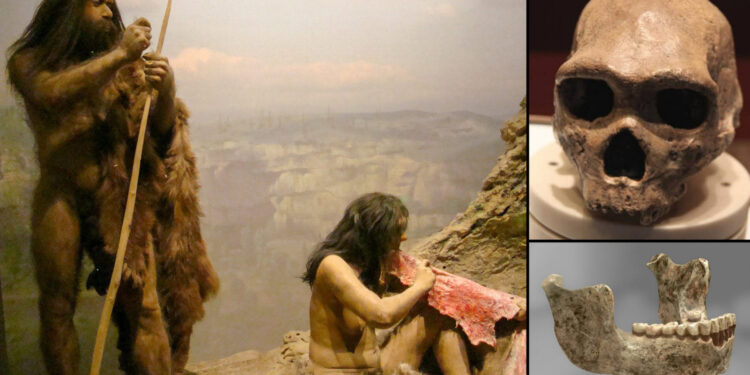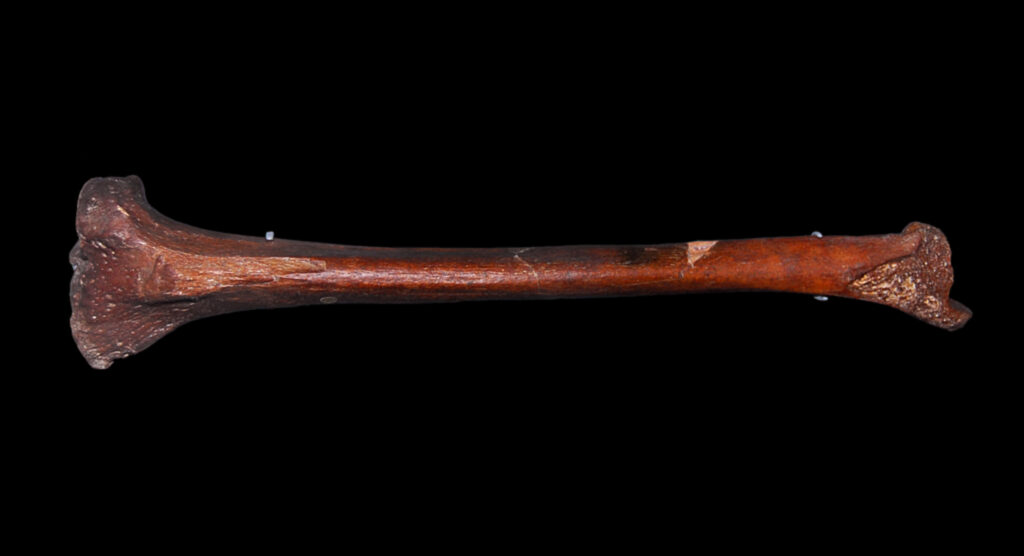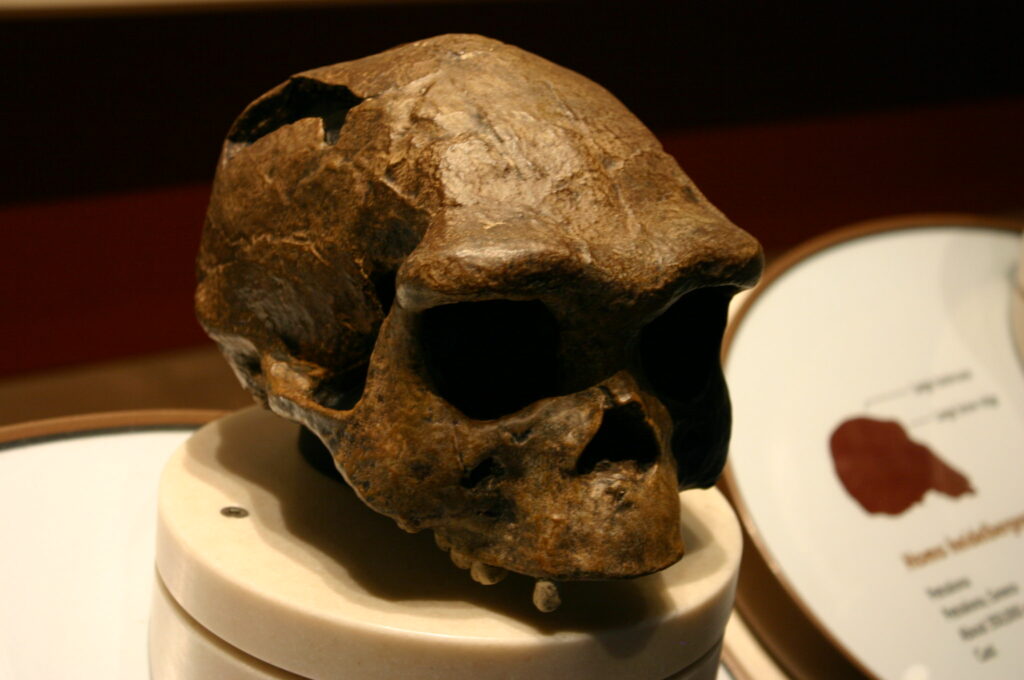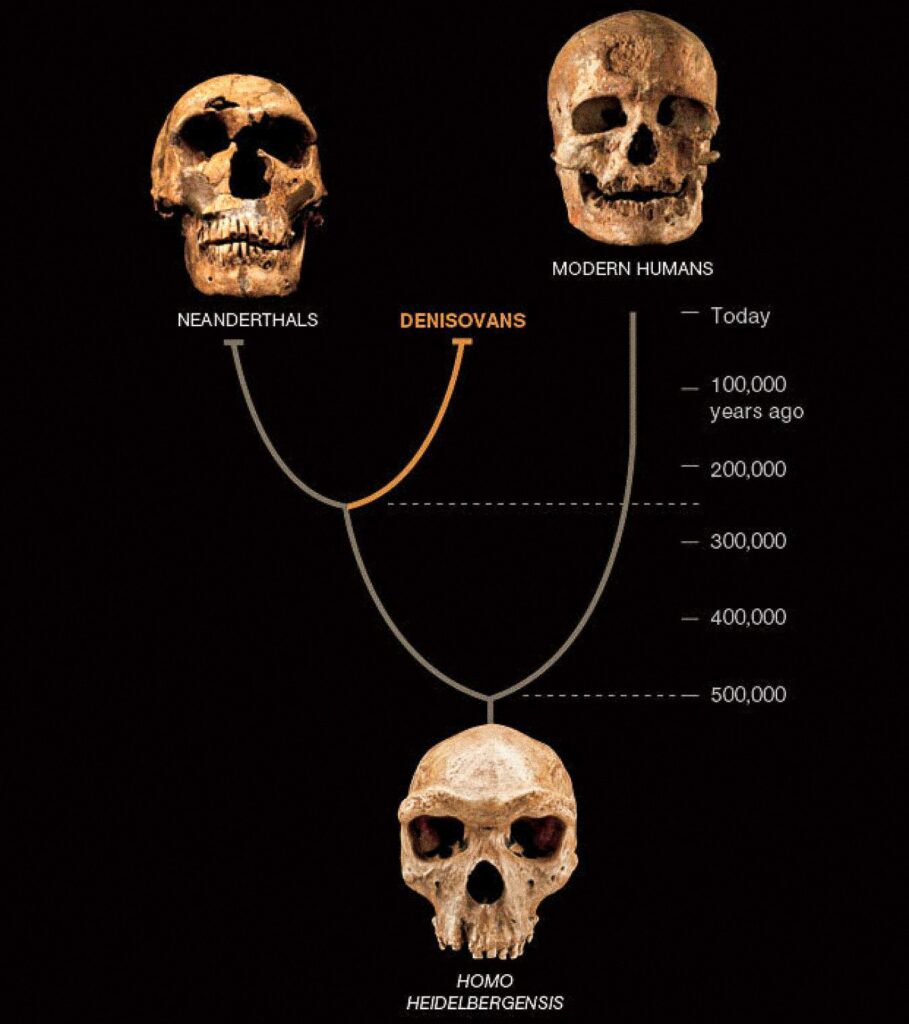In November 2013, scientists recovered one of world’s oldest human DNA, containing evidence of an unknown species, from a 400,000-year-old thigh bone. The DNA from these human ancestors that are hundreds of thousands of years old shows a complex pattern of evolution in the origin of Neanderthals and modern humans. The bone belongs to a human, but contains ‘ALIEN DNA‘. This remarkable finding has made scientists question everything they know about human evolution.
The 400,000-year-old genetic material comes from bones that have been linked to Neanderthals in Spain — but its signature is most similar to that of a different ancient human population from Siberia, known as the Denisovans.
More than 6,000 human fossils, representing about 28 individuals, were recovered from the Sima de los Huesos site, a hard-to-get-to cave chamber that lies about 100 feet (30 meters) below the surface in northern Spain. The fossils seemed to be unusually well-preserved, thanks in part to the undisturbed cave’s constant cool temperature and high humidity.
The researchers who did the analysis said their findings show an “unexpected link” between two of our extinct cousin species. This discovery could crack the mystery — not only for the early humans who lived in the cave complex known as Sima de los Huesos (Spanish for “Pit of Bones”), but for other mysterious populations in the Pleistocene epoch.
Previous analysis of bones from the cave had led researchers to assume that the Sima de los Huesos people were closely related to Neanderthals on the basis of their skeletal features. But the mitochondrial DNA was far more similar to that of the Denisovans, an early human population that was thought to have split off from Neanderthals around 640,000 years ago.
Scientists further found that 1 percent of the Denisovan genome came from another mysterious relative dubbed “super-archaic human” by scholars. It’s estimated, in turn, some modern humans could hold about 15 percent of these “super-archaic” gene regions. Therefore, this study shows the Sima de los Huesos people were closely related to Neanderthals, Denisovans and an unknown population of early humans. So, who could this unknown human ancestor be?
One potential contender could be Homo erectus, an extinct human ancestor who lived in Africa about 1 million years ago. The problem is, we’ve never found any H. erectus DNA, so the most we can do is guess at the moment.
On the other hand, some theorists have put forth some really intriguing thoughts. They claim that the so-called 97 percent of non-coding sequences in human DNA are nothing less than the genetic blueprint of extraterrestrial life forms.
According to them, in the distant past, human DNA was purposefully engineered by some kind of advanced extraterrestrial race; and the unknown “super-archaic” ancestor of the Sima de los Huesos people could be the evidence of this artificial evolution.
Extraterrestrial connection or an unknown human species, whatever it is, the findings only further complicate the evolutionary history of the modern human — it’s possible there may have been ever more populations involved. They are mysterious, they are secrets and they exist (within us) for millions of years.


























